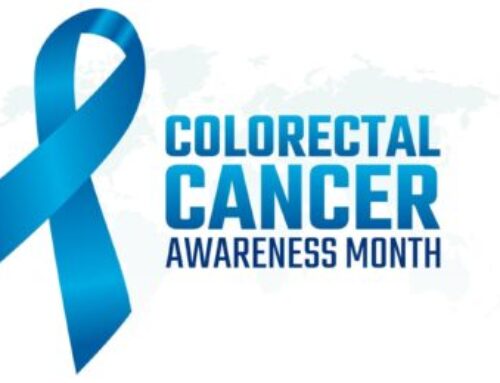The Science of COVID-19 and Vaccine
By Ken Brafman from The Mountain News
Presented by Dr. Christian Ramers
 Mountains Community Hospital hosted an educational presentation on Saturday at the Lake Arrowhead Resort entitled, ‘What to Know About COVID-19 and the Vaccine.’ The guest speaker was Dr. Christian Ramers, a specialist in infectious diseases who oversees clinical programs at Family Health Centers of San Diego.
Mountains Community Hospital hosted an educational presentation on Saturday at the Lake Arrowhead Resort entitled, ‘What to Know About COVID-19 and the Vaccine.’ The guest speaker was Dr. Christian Ramers, a specialist in infectious diseases who oversees clinical programs at Family Health Centers of San Diego.
Robert Augat, a certified registered nurse anesthetist at MCH, introduced the doctor. “Since the onset of the COVID-19 epidemic Dr. Ramers has taken a leadership role in policies, laboratory, public health research and clinical response. Since I’ve known him, he has shown himself to be passionate about this subject, educating the public in a very friendly and informed way. We’re privileged to have him. In addition, he’s one of our neighbors. He has a house up here and lives here with his family part-time.”
Dr. Ramers greeted those in attendance, and those online, and began. “I have a lot to cover. COVID has been with us for nearly two years now and it’s pretty much run my life for those years, and it’s great to have the escape we have up here. You know, there’s a lot of uncertainty about where we’re going.”
Dr. Ramers proceeded to give the basics of where we’re at with COVID. He said that we’re not talking about variants much anymore. “All we really have out there is the Delta Variant,” Ramers explained. “About 99.8% of what we’re seeing is the Delta. The hot topic right now is vaccines in children.”
“These coronaviruses have been around for quite a while. We know what they are, we know what they look like. They’re known to cause about 30% of colds people have.” Ramers recounted former outbreaks such as SARS in 2002 and 2003 in Asian countries. “People wore masks everywhere, all the time. In airports people still wear masks and it’s because of the original SARS. It was devastating, and actually much more fatal than what we’re dealing with now. Then MERS came along, another coronavirus. It sort of made the jump from camels to humans. So COVID is not that unusual to someone like me. There’s a new infectious disease that comes around the world every three to four years and this is just kind of the latest one.” He put it in context, saying, “This isn’t some bioterrorism event. This is just what we’re used to seeing with infectious diseases.”
The doctor continued to run down how epidemics work. “A lot of infectious diseases make the jump from animal to human. Tuberculosis, influenza, smallpox. Tuberculosis came from cows, influenza came from birds, HIV came from monkeys. It’s just how things happen.” Addressing the current virus, Ramers said, “It was probably from bats, with some kind of intermediary mammal.”
Regarding masking, Ramers offered, “One thought on transmission, and why masks actually work. This has been debated for quite a while, where originally scientists just thought it was droplets, which fell to the ground within about six feet. But there’s an increasing recognition that aerosols, or smaller droplets, that go much farther distances are involved as well. These small droplets can hang in the air for hours. This is why it’s been so hard to contain COVID-19. The virus is in the droplets, and they need to be blocked by the mask, which they are.”
“About 80% of patients have mild to moderate cases of COVID, and they’ll recover, and they’ll do OK. But it’s always been the case that 15-20% of people are going to have a really hard time with the disease, and of that about 5% are going to be critical.” Ramers laid out a typical scenario for the cycle of exposure. “You could be exposed today and not begin to have any symptoms for a whole two weeks. It might take another two days to find a test, and get results, and then you may have this period where you get symptoms and really start feeling sick. Then it’s usually about 14 days before you show up in the hospital. And most people in the hospital will go on a ventilator, then it’s another two to three weeks before you die.”
An important distinction was made regarding the two different ways the virus can manifest. The first phase involves the acute onset of flu-like symptoms caused by the actual virus. By day 10 the virus can become almost undetectable. “It’s at this time the body can have an incredibly hyperinflammatory immune response that literally fills people’s lungs with inflammation. We are able to use drugs such as steroids. We wish we could use antiviral drugs, but they only seem to be effective in the very early stage.”
Dr. Ramers talked about pre-existing conditions. He said that age is a factor, and that even with the vaccine there’s a higher vulnerability because older people don’t develop an immune response from the vaccine as readily. He also stated that people with a higher BMI (Body Mass Index) are more likely to enter the hospital and possibly end up in the ICU. “I think this has been underemphasized in the United States that being healthy, eating healthy, having a good, fit lifestyle, is very good for lessening your chances of dying from COVID. Having other conditions or risk factors increase your danger, as well.”
Patients experiencing aftereffects from COVID have been increasing in numbers. “We have hundreds of people now coming into clinic with something called long COVID. It’s a terrible, poorly understood condition which we have almost nothing to offer for. And it’s devastating for some people. We have patients who can completely not work any more because they have terrible fatigue, they don’t have restful sleep, they have brain fog, they have chronic headaches, and it’s now thought that about 10-30% of people that have COVID will have these symptoms. Symptoms can last a month and we have no idea why it’s happening.”
Some data from Johns Hopkins was discussed, which alluded to vaccines. “We crossed the threshold of over 5 million deaths worldwide, we’ve vaccinated 7 billion people. The number of deaths is probably grossly underestimated, and the true figure may be more like 16 million. Some countries such as Russia routinely underreport their mortality rates for political reasons,” he said. “Those who say the vaccine is too new, that we don’t know much about it, this is the biggest vaccination campaign that’s ever happened in the history of the world.”
There’s a concern that Americans are becoming lazy in their approach to COVID safety. “Unfortunately, in the U.S. people have gotten a little complacent, thinking vaccination rates are OK, that COVID’s kind of over,” Ramers said. “COVID is not over. We’re still losing 1,300 people a day who are dying of COVID in the United States.”
Statistics were presented comparing vaccinated versus unvaccinated subjects. For California the takeaway was that unvaccinated people have a significantly greater risk of being hospitalized and dying. “There have been some breakthrough infections among those vaccinated, but overall the unvaccinated have a 15 times greater death rate from COVID.”
Ramers shared the good success his organization has had down south. “I’m very proud to say that I’m on the county vaccine committee in San Diego and we’ve done as much as we possibly can to promote vaccination to protect our more vulnerable people, and we actually have a 90% rate, of those who are eligible, who have each received at least one dose. And an 81% of people who are fully vaccinated. More than 5 million vaccines have been given in San Diego County, and we think that’s responsible for our hospitals not being overrun with COVID anymore.”
He gave his thoughts on the anti-vaccination movement. “As someone who’s out speaking about what the science is behind the vaccines, I get frustrated that I feel like there’s this very vocal anti-vacc movement and actually a very efficient movement of anti-vacc information on social media, and it’s been kind of hard to fight against it. But it’s coming from less than 10% of the population that’s very, very strong and have dug in their heels. It’s not a 50-50 thing like you see on Fox News or CNN, where there’s a pro and a con. In San Diego 90% of people have gotten their vaccine. So it’s a very, very small vocal minority.”
That said, Dr. Ramers spent a good half hour further explaining vaccines including production, storage, distribution, incidences of side effects, and so on. He broke down the action of vaccines on a molecular level.
He went on, “In the United States 193 million people are now fully vaccinated. That sounds great. And that gives us about 68% of those that are eligible. That puts us at the bottom of industrialized countries. Which is pretty pathetic, that we are the place that has the scientific discovery. That we are the place that makes them, and develops them, and markets them, and now are lower than Canada, and Australia, and many of the European countries. California is at about 70%.”
A question came from an audience member regarding vaccines. “I have a concern about our own antibodies. In the beginning I read somewhere that taking the vaccination neutralizes our antibodies, our fighting system. And of course, what you described about our immune system, how once we get the COVID, it goes berserk, and that’s the problem. So, basically, with the vaccine our antibodies are neutralized, in a way, but do they ever come back? We understand that the whole idea of the vaccine is to suppress our own antibodies, is that correct?” Ramers replied, “No, no, no.” “But does that happen?” Ramers explained, “The highest level of protection we’ve ever seen across the board are people who have had an infection and then got vaccinated.” The question prompted a followup speech on the subject, with the doctor breaking down the different levels of protection afforded a patient based on different factors such having had COVID.
Another question was offered, this one about boosters. The gentleman wanted to better understand some studies, such as the one stating the efficacy of the Moderna brand. “The study was done with a full dose of Moderna, but if a half-dose is administered, do you get the same boost in antibodies as you would get with a full dose, as the study indicated?” The reply was, “You’re correct, this study was done with 100mcg, not 50, so you probably would get a little bit lower. All things being equal, Moderna and Pfizer are exactly the same. I think Moderna is doing a really good job at a lower dose giving a good response.”
Next came an online question. “I have fourth stage chronic kidney disease. My cousin had COVID but is better now and took the Pfizer booster one month ago. Do I need to stay away from her?” Dr. Ramer responded, “That question hints at whether the vaccine makes you infectious and the answer is absolutely not. There is zero replication-competent virus in the vaccine. There are stories where schools have tried to keep away kids who were vaccinated, because they’re contagious, and that is thoroughly false.”
Slides were presented outlining several drugs that are currently in trials. One of them is called Molnupiravir. “Just in the past couple days in the news was a new Pfizer drug. It gives an 80% drop in hospitalizations when given early. This is good news because right now the best treatment we have is something called monoclonal antibodies. It’s incredibly effective, it gives an 80% drop in risk of being hospitalized, when given early. And if any of you have COVID, if it’s a breakthrough case, or a primary case, call Mountains because they’re offering monoclonal antibodies by infusions, and it’s the best thing you can do for yourself to help keep yourself safe. You can get the treatment whether you’ve been immunized or not.”
The next section saw Dr. Ramers give an impassioned talk about pediatric COVID. “The fundamental question I hear is, ‘is Covid a problem in kids?’ And it really, really bothers me. I try to stay unbiased here but when people get on TV and say COVID is not a problem in kids it is the most cold-hearted, insensitive thing you could possibly hear. Because we’ve lost 800 kids to COVID. We’ve had 65,000 kids hospitalized for COVID. A third of them in the ICU. And to say, ‘Well, they just had underlying conditions,’ is the most cold-hearted thing I’ve ever heard.” He went on, “We lose a hundred kids a year to the flu and it’s still a very big deal, that we want to vaccinate people against influenza. So let’s break it down into what the facts are and I’ll let you decide whether you think it’s a problem.”
The doctor explained how kids ten years old and above can transmit the virus to an adult, and an adult to a kid. “I’ve had two of my own patients die from COVID that their kid brought in from high school. You can hear on TV, ‘Oh, there’s a 99.99% survival rate in kids.’ And that’s true. But when you have 6 million cases, do the math. Underlying conditions contributing to the 65,000 pediatric hospitalizations? Yes, that’s true. About 68% of them. The conditions are mostly obesity and asthma, and those are incredibly common conditions. But the other 32% had no underlying conditions. About 10% of pediatric patients acquire long COVID, the devastating disease we talked about earlier. Multisymptom Inflammatory Syndrome is where kids have a totally out of control immune response where their own immune systems are attacking their body after a COVID infection. That’s happened well over 5,000 times in the U.S.”
A gentleman in the audience asked about masks. “I just spent two weeks in Italy and noticed that nobody wears cloth masks there. Also, nobody questions wearing a mask.” Dr. Ramers responded, “So masks come in many different varieties. The lowest quality would be like a gaiter or a bandanna because you’re just open to the world in the bottom there. And then up from there is a cloth mask, and cloth masks having at least three plies are considered better. Up from there is a surgical mask. A cloth mask is literally cloth and threads. A surgical mask is a blown fabric, so it actually works much better. It has an ionic charge to it which generally repels viruses. Then one step above that are going to be masks called a KN90 and a KN95. I wear a KN95 when I’m at work, with COVID patients. It’s a 3M product and it’s very thick, and it makes the top of my nose bleed if I wear it too long, but they now have some that are much more comfortable.” The doctor added, “If I was doing something like going to the airport, I would go with the N95 mask. For general moving around the surgical mask is superior to a cloth mask.”
Dr. Ramers replied to an online question about boosters. The person said they worked in a health care facility that required vaccines by September 30 and she wanted to know what the date might be that boosters are required. “I don’t believe that an order requiring a booster any time soon will be coming down the pike. As of right now, fully vaccinated means getting your primary series only. The whole booster campaign is focused on those who are immunosuppressed or older age, who have a high risk of the vaccine not working.”
Dr. Ramers gave everyone a heads up that the next question was a tough one, and he wasn’t sure he would have a correct answer. “Should we gather for Christmas with the unvaccinated? Being indoors, windows shut due to the cold weather, all family members vaccinated except two, who are anti-vacc? Our family members include elderly and immunocompromised people.” The doctor responded, “So this is a tough situation, and it’s happening with families across the entire U.S. And what we are being asked to do is to make risk-based decisions based on incredibly complicated circumstances. This is not a very safe situation, I would say. But what you can do to make it safer is test people, make sure they take a test before you get together. You can do whatever distancing you can possibly do, you can keep people with symptoms out of that situation, and you can wear masks in the home if you want to. But this is a situation where someone could spread COVID. So that’s a tough call. I mean, you’d actually have to have a conversation with your anti-vacc relative, and I’ve heard of plenty of people who were uninvited to Thanksgiving, and Christmas, and weddings because they refused to be vaccinated.
Next came a hot button question, one that’s persisted almost from day one. “Was COVID a natural evolution of a virus in animals jumping to humans, or a leap from the Institute of Virology in Wuhan?” The doctor gave his best answer. “Now this is an incredibly politically charged question that I think, as I mentioned, we have had many coronaviruses throughout our history. So to think that there’s not just another one that can jump across…that’s the most likely explanation for me. But there’s a lot of theories there. This issue is very, very political over whether China started this whole thing. I think it’s perfectly plausible that this was a jump from a species to humans, just like we’ve had with tuberculosis, influenza, HIV, smallpox and other things.”
After thanking the audience in the ballroom, as well as those online, Dr. Ramers shared his closing thoughts. “I want to say that we’re going to get through this. It’s been really, really disappointing to see how much people are yelling at each other about all this stuff, because this is just boring public health that’s been going on for years and years and years, and these poor public health officials that are just trying to do their best to use the tools that they have to keep the community safe, have now really become targets of a lot of yelling and that type of thing. Same kind of thing with schools. You already agreed to get kids vaccinated against 10 things, so the vaccine mandate to keep our kids safe in school is really not that unusual. I think it’s been interesting that this disease has shown us a lot about ourselves. I think that, unfortunately, we kind of need to take care of each other a little bit better than we have been so far and stop yelling at each other. And the last thing is the issue about misinformation that’s been really scary to me, how a small group of anti-vacc people, or even people from Russia, can use social media to just make people hate each other over information that’s really not true. Scientific evidence and scientific information are not sexy, it happens very slowly, and it goes at its pace. And yet misinformation travels like crazy through the internet. So that’s been a major thing that I think we should return to being cautious, and to really trying to weigh evidence in an objective and dispassionate kind of way. Thank you again for coming, and for your interest.”
For much more information go to www.mchcares.com for the link to the video.




